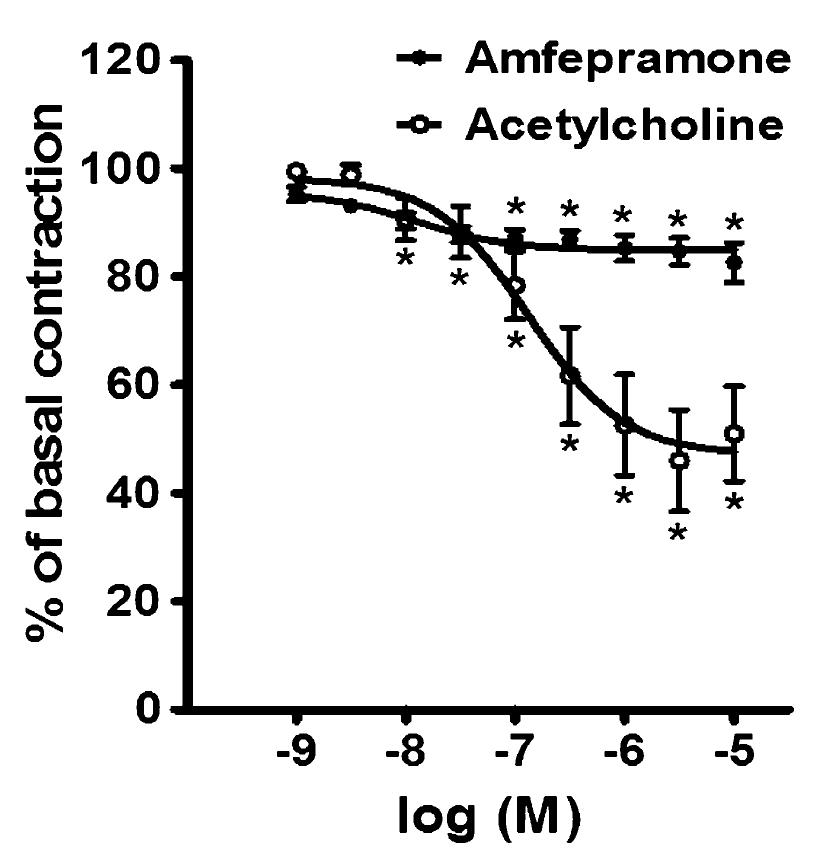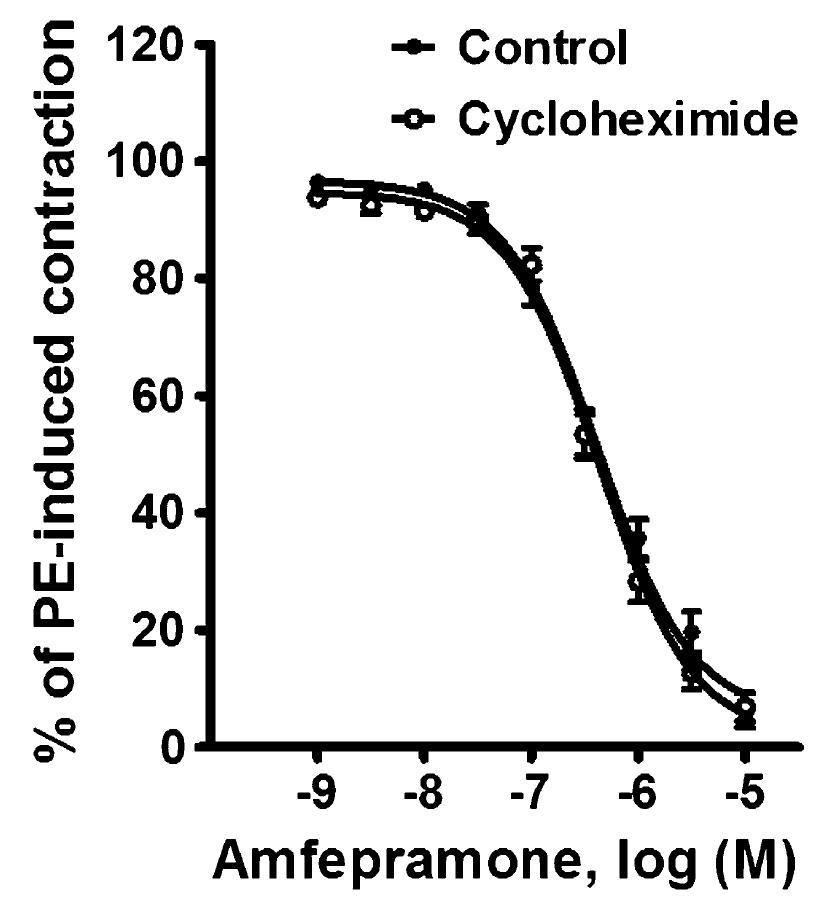Amfepramone (diethylpropion) is an appetite-suppressant drug used for the treatment of overweight and obesity. It has been suggested that the systemic and central activity of amfepramone produces cardiovascular effects such as transient ischemic attacks and primary pulmonary hypertension. However, it is not known whether amfepramone produces immediate vascular effects when applied in vitro to rat aortic rings and, if so, what mechanisms may be involved. We analyzed the effect of amfepramone on phenylephrine-precontracted rat aortic rings with or without endothelium and the influence of inhibitors or blockers on this effect. Amfepramone produced a concentration-dependent vasorelaxation in phenylephrine-precontracted rat aortic rings that was not affected by the vehicle, atropine, 4-AP, glibenclamide, indomethacin, clotrimazole, or cycloheximide. The vasorelaxant effect of amfepramone was significantly attenuated by NG-nitro-L-arginine methyl ester (L-NAME) and tetraethylammonium (TEA), and was blocked by removal of the vascular endothelium. These results suggest that amfepramone had a direct vasorelaxant effect on phenylephrine-precontracted rat aortic rings, and that inhibition of endothelial nitric oxide synthase and the opening of Ca2+-activated K+ channels were involved in this effect.
Cardiovascular pharmacology; Amfepramone; Obesity; Rat aorta; Nitric oxide; Potassium channels






